 November 14, 2019 John E. Ross, KD8IDJ, Editor
| ||||||
HamSCI Founder Nathaniel Frissell, W2NAF, Wins $1.3 Million Ionosphere Study Grant Nathaniel Frissell, W2NAF, now a University of Scranton physics and electrical engineering professor, has won a $1.3 million National Science Foundation (NSF) grant to study weather effects in the ionosphere by leveraging a network of amateur radio stations. Frissell is perhaps best known within the amateur radio community as the founder of HamSCI, the Ham Radio Science Citizen Investigation initiative. The Distributed Arrays of Small Instruments (DASI) project will be implemented over 3 years. As principal investigator, Frissell -- a space physicist -- will head a collaborative team that will develop ground-based space science observation instruments and software. His research effort will recruit multiple universities and radio amateurs to operate a network of personal space weather stations.
Frissell said the grant demonstrates that the scientific community is taking amateur radio seriously. "This is great for ham radio, as it provides yet another avenue for us to contribute to the art and science of radio in a meaningful way," he said. The space weather equipment will be developed at two levels of sophistication -- one at a low-cost, easy-to-use level for radio amateurs, and another, more complex version for university partners that will allow the collection of additional data. "The equipment and network allows us to measure and characterize ionospheric and geomagnetic short-term, small-scale variability on a large geographic scale in order to understand the response of the ionosphere to sources from above (space weather) and below (atmospheric forcing)," Frissell explained in his grant proposal. "By designing personal space weather station variants at multiple price points, open sourcing the hardware and software, and directly engaging with the ham radio community, this project maximizes the chances of widespread adoption of this system." Frissell intends to focus his recruitment efforts through HamSCI and TAPR. Read more. World Radiocommunication Conference 2019 Enters Its Third Week Intense discussions of the most contentious agenda items marked the second week of World Radiocommunication Conference 2019 (WRC-19), but very little was resolved.
50 MHz in Region 1: While a couple of details remain to be worked out as to how other existing services in Region 1 (Europe, Africa, and the Middle East) will be protected from interference, there is agreement that the amateur service should gain entry at 50 MHz in the international Table of Frequency Allocations for Region 1. The present 6-meter allocations in Regions 2 and 3 will be unchanged. Region 1 administrations came to the conference holding disparate views on this agenda item, ranging from a 4 MHz primary allocation to no allocation at all. Sumner said a delicate compromise led to a positive outcome. "While it is too early to celebrate, we are cautiously optimistic that the compromise will hold," Sumner reported. In a separate report, Radio Amateurs of Canada Special Advisor Bryan Rawlings, VE3QN, said that hammering out a 6-meter Region 1 allocation "has been a long and frustrating process," and that a 4 MHz primary allocation similar to that available in Regions 2 and 3 is an unlikely outcome.
Future Agenda Items: The IARU is not seeking any agenda items for future WRCs at this conference. With the spectrum from 8.3 kHz to 275 GHz fully allocated and some bands above 275 GHz already identified for particular uses, any proposal for new allocations involves sharing with one or more incumbent services. "The pressures for spectrum access to accommodate new uses for commercial purposes are intense; for an established service such as ours, any WRC that does not reduce our own useful spectrum access is a success," Sumner said. The notion of including 144 - 146 MHz in a study of non-safety aeronautical mobile service applications has not resurfaced at WRC-19. The IARU is, however, concerned about a proposed item for WRC-23, "Review of the amateur service and the amateur-satellite service allocations to ensure the protection of the radionavigation-satellite service (space-to-Earth) in the frequency band 1240 - 1300 MHz." A single, well-documented and quickly resolved case of interference to a Galileo (GPS) receiver 5 years ago prompted the proposed agenda item. "The IARU recognizes the concern and does not want the amateur service to affect the operation of the Galileo system in any way," Sumner said. WRC-19 will conclude on November 22. Read more. RF-Seismograph Gets Traction in Hackaday Alex Schwarz, VE7DXW, has theorized for some time now that his RF-Seismograph, initially aimed at indicating band openings, seemed to also act as a real seismograph of sorts, with effects of earthquakes affecting HF noise levels and -- going out on a limb -- actually briefly enhancing HF propagation (click on image). Schwarz has some support from Professor Kosuke Heki of Hokkaido University in Japan, who has been researching whether changes occur in the ionosphere as a result of an earthquake.
Heki's theory is along these lines: Chemical bonds in the rock -- specifically peroxy bonds between two oxygen atoms -- are broken by microfractures, leaving one side of the peroxy bond with excess electrons and the other with a positive hole. "These holes tend to migrate from high stress to unstressed areas of the rock, which leads them to eventually reach the surface, leaving it with a net positive charge," the Hackaday piece says. "As stress in the rock below increases, the number of positive holes reaching the surface rapidly multiplies, drawing electrons from the atmosphere to balance the charge. The moving charges generate an enormous electromagnetic field that can reach all the way up to the ionosphere, creating just the kind of anomalies that Professor Heki observed."
This week, Schwarz reported that the US Geological Survey recorded nine "significant earthquakes" on November 11, eight of which also were recorded by his RF-Seismograph. According to Schwarz, several small quakes early in the morning "opened the 40-meter band slightly, but the precursor of the quake [in Neiafu, Tonga] created a disturbance starting 4 hours prior to the quake and a total radio blackout between 0330 UTC and 0550 UTC. The quakes in late morning did not have a great effect on the local propagation. The one from Vanuatu created 80-meter propagation for 10 minutes only. At 2340 UTC, another quake from Indonesia opened the 30-meter band again," Schwarz said. The Hackaday article concludes, "Clearly, the RF-Seismograph is not yet ready to claim to have a solid predictive ability for earthquakes. For that matter, Dr. Heki's space-based observations aren't ready to stake that claim either. But it certainly looks like ionospheric changes can be correlated to earthquakes, both in time and space..." So Now What? Podcast "Navigating the Nets," with guest Steve Ewald, WV1X, ARRL Field Services Supervisor, will be the focus of the new (November 14) episode of the So Now What? podcast for amateur radio newcomers.
So Now What? is sponsored by LDG Electronics, a family owned and operated business with laboratories in southern Maryland that offers a wide array of antenna tuners and other amateur radio products. ARRL Communications Content Producer Michelle Patnode, W3MVP, and ARRL Station Manager Joe Carcia, NJ1Q, co-host the podcast. Presented as a lively conversation, with Patnode representing newer hams and Carcia the veteran operators, the podcast will explore questions that newer hams may have and the issues that keep participants from staying active in the hobby. Some episodes will feature guests to answer questions on specific topic areas. Listeners can find So Now What? on Apple iTunes, Blubrry, Stitcher (free registration required, or browse the site as a guest) and through the free Stitcher app for iOS, Kindle, or Android devices. Episodes will be archived on the ARRL website. The K7RA Solar Update Tad Cook, K7RA, Seattle, reports: With little to no solar activity, it's amazing how many HF DX contacts are possible, even without taking advantage of so-called weak-signal modes such as FT8. Recent DXpeditions, such as the ones on Pitcairn Island and the Marquesas, had little trouble piling up the contacts, even on 10 meters. It helps that fall is upon us.
Predicted solar flux is 71 on November 14 - December 3; 70 on December 4 - 18; and 71 on December 19 - 28. Predicted planetary A index is 5 on November 14 - 15; 12 and 8 on November 16 - 17; 5 on November 18 - 19; 18, 25, 18, 12, and 10 on November 20 - 24; 8 on November 25 - 26; 5 on November 27 - December 16; 15, 25, 18, 12, and 10 on December 17 - 21; 8 on December 22 - 23, and 5 on December 24 - 28. Sunspot numbers for November 7 - 13 were 0, 0, 0, 0, 0, 0, and 0, with a mean of 0. The 10.7-centimeter flux was 69.8, 70.2, 69.6, 70.8, 69.5, 70.8, and 71.1, with a mean of 70.4. Estimated planetary A indices were 5, 3, 4, 3, 7, 4, and 2, with a mean of 4.1. Middle latitude A index was 3, 2, 3, 2, 7, 3, and 1, with a mean of 2.7. A comprehensive K7RA Solar Update is posted Fridays on the ARRL website. For more information concerning radio propagation, visit the ARRL Technical Information Service, read "What the Numbers Mean...," and check out K9LA's Propagation Page. A propagation bulletin archive is available. Monthly charts offer propagation projections between the US and a dozen DX locations. Share your reports and observations. Just Ahead in Radiosport
See the ARRL Contest Calendar for more information. For in-depth reporting on amateur radio contesting, subscribe to The ARRL Contest Update via your ARRL member profile email preferences. More Than 1 Million Contacts Logged During 2019 ARRL Field Day ARRL Contest Program Manager Paul Bourque, N1SFE, reports that nearly 1.1 million contacts were made during the 2019 ARRL Field Day -- the most popular operating event in North America. Bourque reported the 2019 ARRL Field Day results, which are available starting on page 64 of the digital edition of the December 2019 issue of QST. Bourque says in his article that more than 36,000 radio amateurs took part in 2019 Field Day across all 83 ARRL/Radio Amateurs of Canada Sections, up slightly from the 35,250 reported last year. The total number of contacts was down by about 7% from 2018's 1.18 million contacts.
"This year, 3,113 entries were received from local clubs and emergency operations centers (EOCs), as well as individual portable, mobile, and home stations," Bourque wrote in QST. Most entries were in Class A -- club or non-club groups of three or more. Of the nearly 1.1 million contacts, approximately 46% were made on phone, and 456,000 (42%) of contacts were made on CW. The remaining 138,000+ (12%) of the contacts were made on digital modes, such as FT8 and RTTY. "This is a substantial increase compared to 2018, when total QSOs on the digital modes numbered just over 56,000," Bourque reported. "With the late 2018 release of WSJT-X (which now supports Field Day exchanges), many participants made use of FT8's ability to communicate when band conditions weren't being cooperative." Top 10 scores ranged between W3AO's Class 14A entry from Maryland-DC, with 32,356 points, to W1NVT's 14,876-point Class 2A entry from Vermont. Bourque said that 95% of the 3,113 entries received came through the Field Day web applet. "Not only is ARRL Field Day an opportunity to sharpen operating skills in temporary and portable locations, it's also an occasion to showcase amateur radio to the local community," Bourque wrote. Soapbox comments for Field Day 2019 are available on the ARRL website. ARRL Field Day 2020 will take place June 27 - 28. AMSAT Says HuskySat-1 is Paving the Way for Further Cooperation AMSAT says it had to maneuver some regulatory challenges in establishing its partnership with the University of Washington to share the just-launched HuskySat-1. The satellite went into space on November 2 aboard a Cygnus cargo vessel, which docked to the International Space Station. HuskySat-1 will be boosted into a higher orbit and deployed in January, and once it completes its primary mission, it will be turned over to AMSAT for operation of its linear transponder sometime in the second quarter of 2020. AMSAT Vice "The [FCC] Part 97 license that AMSAT will operate under does not include or allow the use of any of the experiments on board," Buxton explained. "As those experiments were not able to conform to Part 97's so-called 'educational exemption,' including the K-band radio, two licenses were required." UW obtained a Part 5 Experimental license to cover the telemetry downlink of the AMSAT transponder module, but the transponder must remain off during that operation. The AMSAT transponder module will operate under an FCC Part 97 Amateur Service license. "This was the first partnership with an educational institution where an AMSAT radio was flown on a non-AMSAT (UW in this case) CubeSat," Buxton said. "In the process of working with the FCC and NASA to obtain a single Part 97 license that was not complicated or restricted by 'pecuniary interest,' the experience developed an understanding with FCC as to how a mission such as HuskySat-1 could be fully licensed under Part 97."
Buxton said delays and difficulties encountered in executing all of the requirements to qualify under Part 97 ultimately bumped up against the mission deadline to have a license in hand, so the CubeSat could be integrated on the launch vessel. "The only way forward at that time, in order for UW to make the launch, was to do the separate licensing," Buxton said. "I thank and commend our partners at University of Washington as well as the FCC for their work to make it happen, and our friends at NASA for giving us the opportunity to push for a path to amateur radio licensing for more of the CubeSat launches they sponsor," Buxton remarked. "I believe that it has resulted in a known path toward fully Part 97-licensed educational (e.g., university) CubeSats. That should in turn offer more opportunities for AMSAT radios to fly as the communications package for a mission as well as an operating amateur radio satellite, in the same way as the CubeSats we produce." After deployment, HuskySat-1's 1,200 bps BPSK beacon on 435.800 MHz should be active and decodable with the latest release of FoxTelem. HuskySat-1 is expected to run its primary mission for 30 days -- testing a pulsed plasma thruster and experimental 24 GHz data transmitter -- before being turned over to AMSAT for amateur radio operation. HuskySat-1 will feature a 30 kHz-wide 145-435 MHz linear transponder for SSB/CW. -- Thanks to AMSAT News Service IARU and Amateur Radio Are Reaching "An Inflection Point" Participants at the 45th meeting of the International Amateur Radio Union (IARU) Administrative Council (AC) in late September discussed the organization's role in advancing amateur radio. The IARU released a summary record of the meeting last week. IARU President Tim Ellam, VE6SH/G4HUA, who chaired the AC meeting in Lima, Peru, observed that the IARU and amateur radio are reaching what he called "an inflection point." He asserted that amateur radio is changing, but the IARU and its member-societies are not.
The AC also agreed that it is essential to involve younger people from outside the Council in determining how to address these challenges, and the three IARU regions were asked to identify individuals who "could take ownership of these topics." A small working group was named, consisting of IARU Region 2 Vice President Ramón Santoyo, XE1KK; Region 2 Area A Director George Gorsline, VE3YV, and IARU Region 1 President Don Beattie, G3BJ. Using topics discussed to develop a starting point, the panel will aim to have a draft version of a plan by mid-December to address the challenges that would serve as a basis for further discussion. IARU Region 1 (Europe, Africa, and the Middle East) has been a leader in marshalling interest among next-generation radio amateurs, sponsoring Youngsters On The Air (YOTA), and other youth-related activities, including an annual summer camp attended by young radio amateurs from around Region 1. IARU Region 3 noted at the Council meeting that it plans a Youth on the Air activity in Thailand next October and expressed the hope that Regions 1 and 2 can participate. To keep informed on IARU happenings, subscribe to the ARRL-IARU online group, moderated by IARU Secretary Dave Sumner, K1ZZ. Read more. In Brief...
OTH Radar is now reported to be "everywhere." The latest International Amateur Radio Union Region 1 Monitoring System (IARUMS) newsletter reports the Russian "Contayner" over-the-horizon radar (OTHR) has been active in the 7, 10, 14, and 18 MHz amateur radio allocations (amateur radio is primary on 40, 20, and 17 meters). The OTHR transmissions have been 40 sweeps/second, FM on pulse, and 12 kHz wide. Additionally, IARUMS reports a significant increase in Russian military traffic using F1B, PSK, and orthogonal frequency division multiplex (OFDM) on 40, 30, 20, and 15 meters. IARUMS on November 13 reported an OTHR in northern Iran on 6.078 - 7.022 MHz, AM on pulse, 81 sweeps/second, 44 kHz wide.
Upcoming ARRL Section, State, and Division Conventions
Find conventions and hamfests in your area.
. .
Subscribe to...
Free of charge to ARRL members...
| ||||||
.jpg) "I'm very excited," Frissell told ARRL. "This grant is extremely exciting for both ham radio and ionospheric research. Perhaps more than the money, it means that the NSF is recognizing the good work that we, as hams, are doing and the contribution we can make in the future."
"I'm very excited," Frissell told ARRL. "This grant is extremely exciting for both ham radio and ionospheric research. Perhaps more than the money, it means that the NSF is recognizing the good work that we, as hams, are doing and the contribution we can make in the future." "It is clear that long days and nights are ahead in the last 2 weeks," International Amateur Radio Union (IARU) Secretary David Sumner, K1ZZ, observed earlier this week. Representatives of the IARU and its member-societies -- 14 in all -- are attending all or part of the conference. IARU is admitted in a non-advisory capacity. Those representing IARU may attend meetings but may not participate unless asked by the chairman to provide information. Sumner
"It is clear that long days and nights are ahead in the last 2 weeks," International Amateur Radio Union (IARU) Secretary David Sumner, K1ZZ, observed earlier this week. Representatives of the IARU and its member-societies -- 14 in all -- are attending all or part of the conference. IARU is admitted in a non-advisory capacity. Those representing IARU may attend meetings but may not participate unless asked by the chairman to provide information. Sumner 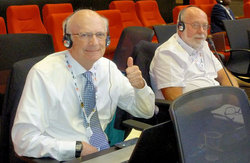
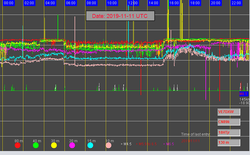
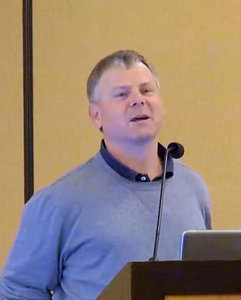
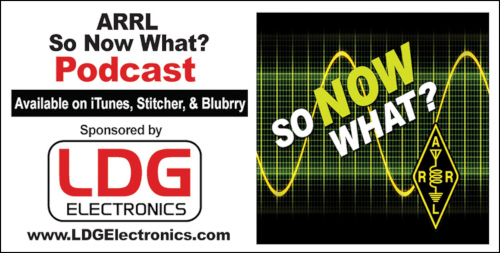 If you're a newly licensed amateur radio operator, chances are you have lots of questions. This biweekly podcast has answers! So Now What? offers insights from those who've been just where you are now. New episodes will be posted every other Thursday, alternating new-episode weeks with the
If you're a newly licensed amateur radio operator, chances are you have lots of questions. This biweekly podcast has answers! So Now What? offers insights from those who've been just where you are now. New episodes will be posted every other Thursday, alternating new-episode weeks with the 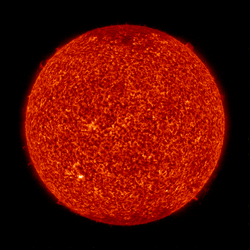 No sunspots over the past week, and average daily solar flux was about the same as last week, 70.3 compared to 70.4. Geomagnetic indices were still quiet, with average daily planetary A index at 4 (last week was 4.1) and middle latitude A index at 3 (compared to 2.7).
No sunspots over the past week, and average daily solar flux was about the same as last week, 70.3 compared to 70.4. Geomagnetic indices were still quiet, with average daily planetary A index at 4 (last week was 4.1) and middle latitude A index at 3 (compared to 2.7).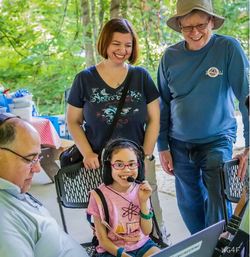
.jpg) President-Engineering Jerry Buxton, N0JY, explained this week that the AMSAT-UW partnership presented some regulatory challenges, but has paved the way for similar partnerships in the future.
President-Engineering Jerry Buxton, N0JY, explained this week that the AMSAT-UW partnership presented some regulatory challenges, but has paved the way for similar partnerships in the future.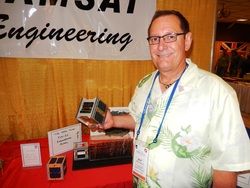
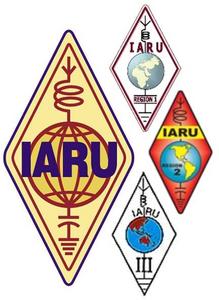 Ellam's remarks prefaced a wide-ranging discussion of the challenges to be overcome if the IARU and amateur radio itself are to remain relevant. After several hours of discussion, AC participants agreed on four top-level headings to identify the challenges that must be faced:
Ellam's remarks prefaced a wide-ranging discussion of the challenges to be overcome if the IARU and amateur radio itself are to remain relevant. After several hours of discussion, AC participants agreed on four top-level headings to identify the challenges that must be faced: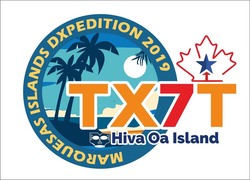 There's still time to work TX7T in the Marquesas Islands. The
There's still time to work TX7T in the Marquesas Islands. The .JPG)
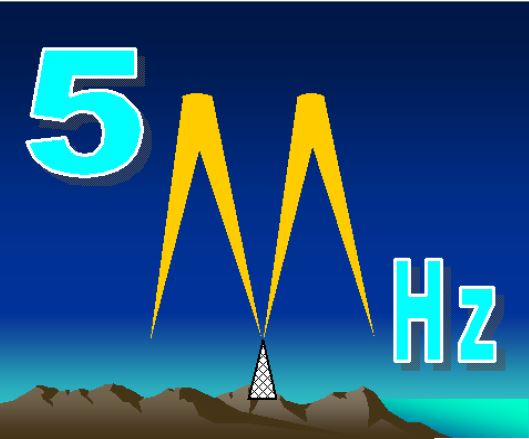 Access to 60 meters continues to expand. According to the latest edition of The 5 MHz Newsletter, regulatory agencies in an expanding list of countries have granted amateur radio access to a 60-meter band. A secondary allocation of 5.351.5 - 5.366.5 MHz was released to radio amateurs in Kuwait, where they will adhere to the World Radiocommunication Conference 2015 (WRC-15) allocation, permitting a maximum power of 15 W EIRP. Indonesian and Greek hams recently gained access to the same allocation. Meanwhile, Israel has extended authorization of 5 MHz amateur permits to the end of December 2023 and added a Channel 0 to the existing eight channels, where hams may run 100 W PEP on several modes, depending upon the channel. Still under discussion is ham radio access to a 5 MHz secondary band in Australia, where the band is used by some emergency services and law enforcement. Nearly 80 countries offer some level of amateur access to the 5 MHz band. In the US, ARRL petitioned the FCC shortly after WRC-15 to allocate a secondary 60-meter band and to permit 100 W PEP, as already authorized on the existing channels there.
Access to 60 meters continues to expand. According to the latest edition of The 5 MHz Newsletter, regulatory agencies in an expanding list of countries have granted amateur radio access to a 60-meter band. A secondary allocation of 5.351.5 - 5.366.5 MHz was released to radio amateurs in Kuwait, where they will adhere to the World Radiocommunication Conference 2015 (WRC-15) allocation, permitting a maximum power of 15 W EIRP. Indonesian and Greek hams recently gained access to the same allocation. Meanwhile, Israel has extended authorization of 5 MHz amateur permits to the end of December 2023 and added a Channel 0 to the existing eight channels, where hams may run 100 W PEP on several modes, depending upon the channel. Still under discussion is ham radio access to a 5 MHz secondary band in Australia, where the band is used by some emergency services and law enforcement. Nearly 80 countries offer some level of amateur access to the 5 MHz band. In the US, ARRL petitioned the FCC shortly after WRC-15 to allocate a secondary 60-meter band and to permit 100 W PEP, as already authorized on the existing channels there.







